
The Vought XF3U was the prototype of a two-seat, all-metal biplane fighter, built by Vought Aircraft Company of Dallas, Texas for the United States Navy.

The Berliner-Joyce XFJ was a United States prototype biplane fighter aircraft that first flew in May 1930. Designed by Berliner-Joyce Aircraft for the United States Navy, its lower wing, placed below the fuselage and just two feet above the ground, apparently gave it a tendency to ground loop when landing, and it was never ordered for production.

The Boeing XF6B-1 / XBFB-1 was Boeing's last biplane design for the United States Navy. Only the one prototype, Model 236, was ever built; although first flying in early 1933, it rammed into a crash barrier in 1936 and the design was not pursued further.

The Aeromarine PG-1 was an American single-seat pursuit (fighter) and ground attack (PG) biplane developed by the Engineering Division of the United States Army and manufactured by the Aeromarine Plane and Motor Co.

The Berliner-Joyce P-16 was a 1930s United States two-seat fighter aircraft produced by Berliner-Joyce Aircraft Corporation.
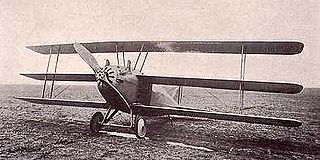
The Curtiss 18T, unofficially known as the Wasp and by the United States Navy as the Kirkham, was an early American triplane fighter aircraft designed by Curtiss for the US Navy.
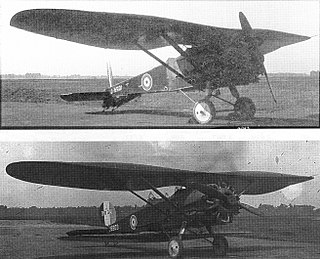
The Bristol Bullfinch was an experimental British military aircraft first flown in 1922. Variants were built as both parasol wing monoplanes and biplanes, but both versions proved unsuccessful, and only the three prototypes were built.

The PZL.4 was a Polish three-engine passenger aircraft for 10 passengers, built in PZL factory in 1932, which remained a prototype. It was the first Polish-designed and produced multi-engine plane.

The Eberhart XFG was an American single-seat experimental ship-borne biplane fighter aircraft developed for the United States Navy in 1927 by the Eberhart Aeroplane and Motor Company. The sole prototype was rebuilt into the XF2G with the addition of a single float and a different engine, but the aircraft was destroyed in a crash in 1928, and the type did not enter production.
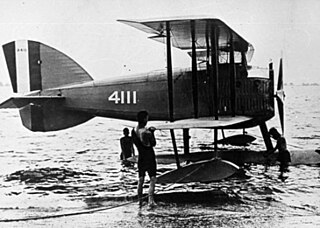
The Curtiss HA was an American biplane seaplane designed by Captain B.L. Smith of the United States Marine Corps, and built by Curtiss Aeroplane and Motor Company. Despite the nickname, it's unrelated to the 1940 Battle of Dunkirk.

The Curtiss XF13C was a carrier-based fighter aircraft built by Curtiss Aeroplane and Motor Company.

The Douglas XFD was a carrier-based biplane fighter aircraft designed for the United States Navy, and the first fighter to be built by the Douglas Aircraft Company. A victim of changing requirements, no production was undertaken.

The Loening PA-1 was an American fighter aircraft prototype built by Loening Aeronautical Engineering.
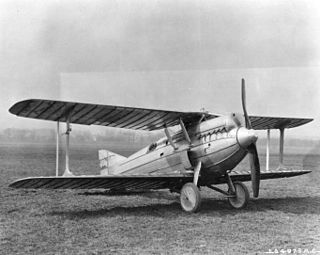
The Gallaudet PW-4 was a prototype biplane fighter aircraft built by the Gallaudet Aircraft Company. It was one of the last projects by the company before it was taken over by Consolidated Aircraft. It was all-metal and powered by a Packard 11A-1237 engine. Three prototypes were ordered by the USAAC, but the company could afford to build only one, which never flew.
The Martin KF-1 was an American biplane fighter aircraft designed and built by Captain James V. Martin.
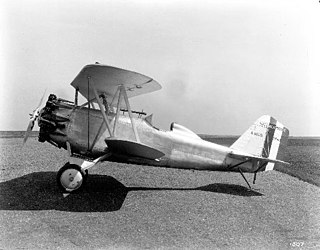
The Hall XFH was an American fighter aircraft built by the Hall Aluminum Company. It was the first fighter with a semi-monocoque metal fuselage.

The Navy-Wright NW series, also called the Mystery Racer were racing aircraft built by Wright Aeronautical Corporation at the request of the US Navy. Although innovative, both prototype racers were lost before achieving their true potential.
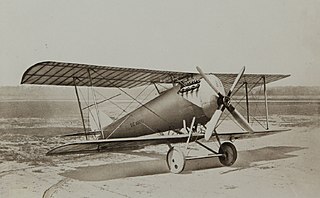
The Pomilio FVL-8 was a biplane fighter aircraft built by Fabbrica Aeroplani Ing. O. Pomilio for Engineering Division of the Aviation Section, U.S. Signal Corps.

The Wright XF3W was an American racing aircraft built by Wright Aeronautical for the United States Navy.

The Thomas-Morse TM-24 was a prototype American two-seat observation aircraft of the 1920s. A single example was built in 1925, but no production followed.



















